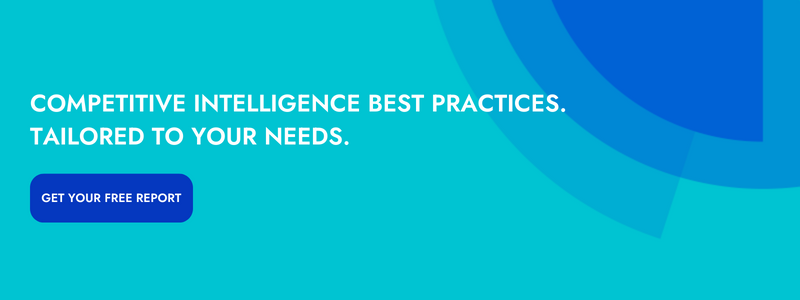Sometimes it pays to be the new kid on the block.
Every few years it seems as if there is a hot new role that catches like wildfire in organizations of all sizes. Can you remember the days before product managers were ubiquitous? I’m hard pressed.
Today, organizations of all sizes hire and maintain product managers, product marketers, and business operations teams–all titles that have come into prominence over the last decade. And if you think the introduction of new titles is stopping there, you’re missing the boat.
As competitive intelligence professionals, we can learn a lot from history. Our work–tracking, synthesizing, and communicating critical competitive information–is new. Many of us are responsible for building our organization’s first-ever compete practice. Compared to teams like sales, engineering, and legal, we are the babies of the organization.
As we get our sea legs and continue evangelizing the power of competitive intelligence, it might be helpful to look back to better understand what is coming ahead of us. Business operations–or BizOps, for short–isn’t as new as compete but it isn’t so entrenched that it feels out of reach either. The team has become a standard in enterprise businesses around the world and can teach us much about the inception, adoption, and growth of a new business function–and how they deliver value to other parts of the organization.
NEED COMPETITIVE INTELLIGENCE BEST PRACTICES? USE OUR FREE TOOL >>
What is BizOps?
Before we can learn from BizOps, let’s start by defining it. BizOps is a relatively young discipline that helps investigate and guide critical business decisions. (Sound familiar?)
BizOps isn’t usually limited to a particular team, geography, or product line. Instead, they are asked to look at specific–often acute–challenges across the company to see if the business is overlooking an opportunity.
Dan Yoo, a seasoned BizOps leader, describes a time when he recommended that LinkedIn aggressively hire a larger sales team. The recommendation came from digging deep into the company’s sales efficiency. The result: “That corner of LinkedIn’s business grew from tens of millions of dollars in revenue to $1.3 billion [in 2014].”
So, what drove BizOps’ fast ascension into must-have talent? In a word: data. As more businesses embraced digital transformation and grew their tech stacks, the sheer amount of data in the organization grew…and grew…and grew. Eventually, we collectively looked up and realized that someone needed to own the management and synthesis of corporate data. BizOps was born.
What can we learn from BizOps?
We’ve seen how BizOps grew from a shiny new title to a must-have support mechanism for important corporate decisions. But what can it teach us as competitive intelligence leaders?
I’ll bet a bunch of the buzzwords and descriptors above jumped out at you–they sure did for me. BizOps looks a lot more like a compete practice than you might expect. Remember: BizOps is not limited in scope, is hungry for data, and supports critical decision-making across the company. That’s not far from compete!
That said, compete and BizOps are different animals. It would be a mistake to assume that a BizOps organization is best utilized to deploy a compete program. While there is some overlap, BizOps is much better equipped to look at specific business problems on a project-by-project basis.
In contrast, competitive teams are looking at the market and how the organization is performing in it. Compete is also responsible for the ongoing management of intelligence programs. That is a huge commitment and not one to be taken lightly. There are labor, technology, and budget requirements that come with managing the lifecycle of a team.
The Office of Compete
With all this in mind, where are we headed? Competitive intelligence has been on the rise, and with enterprise-grade tools like Crayon making it easier than ever to gather, synthesize, and share data and insights, it’s clear that compete is here to stay.
Compete’s potential really boils down to how it can best serve organizations as they look to thrive. Is that as an arm of BizOps? I doubt it. While BizOps focuses on core business challenges–like lagging sales in a particular region, or the deployment of a new ERP solution–compete is better aligned with how a business can succeed.
That makes it a more natural fit with marketing, sales, and product. A lot of organizations already house their compete teams somewhere in those teams, and it’s working. Many competitive projects are essentially looking to optimize two things: velocity and win rate.
Those aren’t going away, and your revenue team will always be hungry for a new lever that can help them improve either one (or both!).
It won’t happen overnight, but I won’t be shocked if compete follows in BizOps’ footsteps: Driven by a business need, it grows into a mission critical team that has a seat at the table in executive-level conversations.
Now that’s a future worth working toward!

Seeing is believing! Check out Crayon for yourself.
Take a Product TourRelated Blog Posts
Popular Posts
-
 The 8 Free Market Research Tools and Resources You Need to Know
The 8 Free Market Research Tools and Resources You Need to Know
-
 How to Create a Competitive Matrix (Step-by-Step Guide With Examples + Free Templates)
How to Create a Competitive Matrix (Step-by-Step Guide With Examples + Free Templates)
-
 6 Competitive Advantage Examples From the Real World
6 Competitive Advantage Examples From the Real World
-
 24 Questions to Consider for Your Next SWOT Analysis
24 Questions to Consider for Your Next SWOT Analysis
-
 How to Measure Product Launch Success: 12 KPIs You Should Be Tracking
How to Measure Product Launch Success: 12 KPIs You Should Be Tracking


